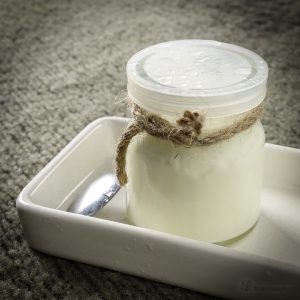LYME DISEASE & YEAST OVERGROWTH
HOW TO FIGHT AN YEAST INFECTION?
Not only Lyme patients struggle with yeast overgrowth! Most of those who suffer from a chronic illness have a weakened immunity system. The yeast infection usually starts in the mouth and slowly makes its way down, spreading to the intestinal tract.
Thus the oral hygiene plays a crucial role as it is the first line of defense against yeast. Antibiotic treatment, a diet high on sugar and highly processed foods are a sure a recipe for yeast overgrowth and other abnormal bacteria. If you are on antibiotic treatment, you are already familiar with the devastating effects of meds on your intestinal flora.
HOW TO PREVENT YEAST OVERGROWTH?
There are many factors that you need to keep in mind when addressing this problem. Oral hygiene and diet are two of the main things you will need to tackle.
If you follow a gluten-free, sugar-free and yeast-free diet, chances of developing an yeast overgrowth are considerably smaller. Also avoiding alcohol intake can improve your chances of keeping yeast under control. You should avoid consuming excessive carbohydrates.
In addition, after each meal, you will need to have probiotics such as Kefir or yogurt as they help replenishing the beneficial bacterias. Try to drink 4 oz of kefir per day or have two capsules of acidophilus probiotic after each meal.
HOW DO YOU KNOW IF YOU HAVE THRUSH?
What are the indicators of oral thrush (oral yeast)?
- Sticky coating on your tongue (white or beige colour)
- Bad bread
- Bad taste in the mouth
ORAL HYGIENE RECOMMENDATIONS
- Use an alcohol-free mouthwash, especially if you are prescribed medicine such as Flagyl as it can lead to a reaction or a side-effect.
- Brush your teeth after each meal or snack using a fluoride!
- Use a sodium laureth sulfate-free toothpaste !
- You should also brush the gums, inner cheeks, the palate!
- After you clean your mouth, use an antiseptic mouthwash. Keep it in the mouth for thirty seconds and move it around to ensure the gums, roof of your mouth, teeth and tongue, they all get cleansed. Rinse with water two or three times to remove it completely.
- After the antiseptic mouthwash, have a bit of yogurt or take a small tablet of acidophilus and chew it to ensure to have a normal oral flora.
- Don’t drink or eat anything on empty stomach in the morning before cleaning your mouth!
- Use a tongue-scraper to remove the yeast-coat from your tongue!
A thorough daily routine will help you follow all the steps religiously and stay yeast free or at least decrease it to a minimum.
WHAT ARE THE SYMPTOMS OF YEAST OVERGROWTH IN THE INTESTINAL TRACT?
- Gas
- Bloating
- Heartburn
- Abdominal pain
- Headaches
- Dizziness
- Lightheadedness
- Woozziness
- Post-meal fatigue.
Why is it important to be on the Lyme diet? Because the yeast germs feed on sugars and starches, turning them into acids, gas and alcohol, causing the above mentioned symptoms.
That means you will to stay away from simple carbohydrates and fruits. If your diet includes a lot of fruits, maybe you should stick to grapefruit, lemons, limes and avocado as they are low on sugar.
WHAT ELSE CAN YOU DO TO HELP COMBAT YEAST?
- Include fermented foods in your diet! By consuming regularly sauerkraut, kombucha, pickles and kefir, you can nourish, support and rebalance the intestinal health.
- Don’t drink alcohol! Besides the fact that it can interact with your medication, it can increase your symptoms.
- Check the quality of your water! If you are used to drink water from the tap, have it tested or ad a filter.
- Drink decaffeinated green tea! Have 2 o 4 cups per day as green tea is a very potent antioxidant. If you don’t see yourself sipping tea, then you could try having the green tea capsules which are a nice alternative. You should take one to three capsules per day.


